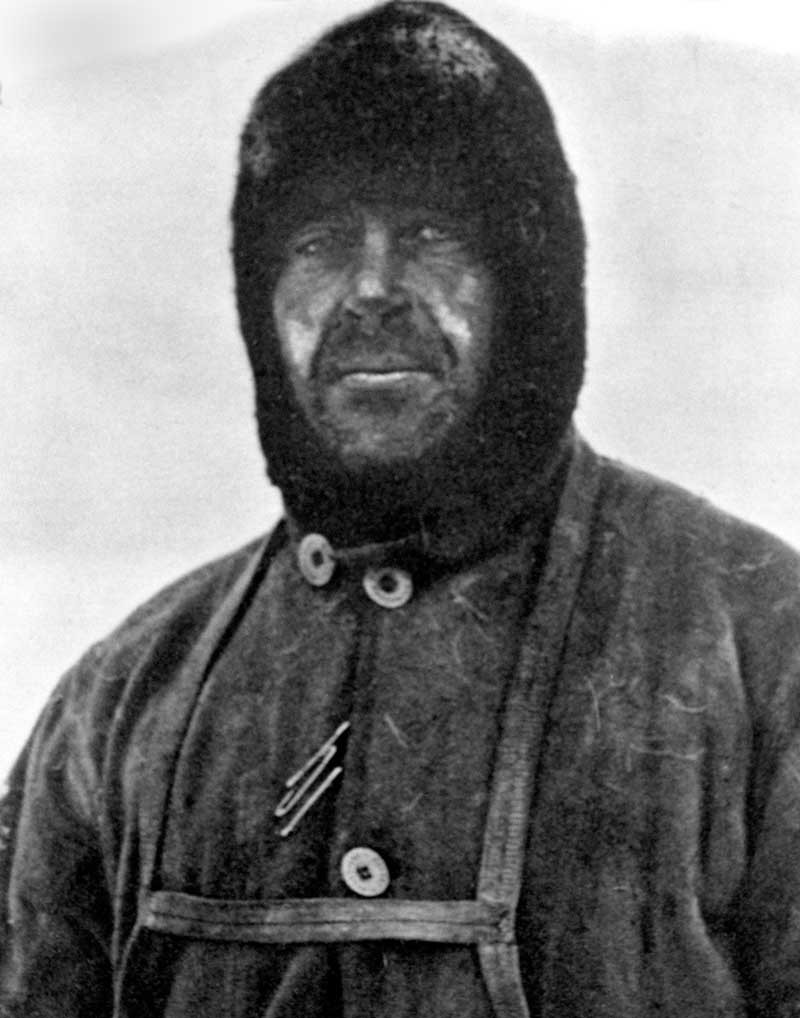The SS Terra Nova, the Dundee-built ship that took Captain Robert Falcon Scott and his team on their ill-fated expedition to the Antarctic a century ago, has been found on the sea bed off Greenland, where she has lain for nearly 70 years.
The sensational event in Dundee’s maritime history has been hailed as remarkable and most appropriate, given that it is 100 years since Captain Scott and his team members perished.
The discovery was made a month ago but the news has has only now been made public and Dundee Discovery Point education officer Brian Kelly was one of only a few people in the country who were in on the secret.
He knew thanks to a visitor who turned up at the Dundee tourist attraction a fortnight ago to ask about Captain Scott’s famous Antarctic explorer.
”He said he had some information I might be interested in and he turned out to be Leighton Rolley, a technician on the Schmidt team who found her,” Brian said.
”I was amazed at what he told me but he insisted that I didn’t tell anyone about it at that time. The Terra Nova had only just been found but various organisations had to be told about the find before it could be made public.
”He was visiting Europe and had been to Oslo to see the Fram, the vessel that Roald Amundsen sailed to the South Atlantic that made him the first person to reach the South Pole.
”He was interested in the history of the event so decided to also come to Dundee to see the Discovery. He was fascinated to see the centre and learn the story of the ship and he had quite a story to share with us.
”It is remarkable that the Terra Nova has been found now, 100 years on from the race to the pole, the death of Scott and four of his crew, and in the year of various events to commemorate that occasion.”
The chance of the Terra Nova ever being brought home to Dundee to appear alongside the Discovery, let alone brought back to the surface, is unlikely.
Brian added: ”She was severely damaged when she was sunk by the US Coastguard and the front of her hull is peeled back, suggesting that the structure may not be able to take any movement.
”She is also in very deep water, I think over 1,000 feet. I’m not an expert on the salvage of ships but I would think that the depth she is at, the condition she is in and the cost of any salvage operation would make her recovery most unlikely,” he added.
Built in 1884 for the Dundee whaling and sealing fleet, the Terra Nova sailed under the command of Scott from Cardiff in 1910 for the quest of his British Expeditionary Force to be first to the South Pole.
His party disembarked from her in November 1911 for the 167-mile trek that was to claim the lives of Scott and four of his companions.
Terra Nova returned from the Antarctic in 1913 and was bought back by the Bowring Brothers to resume work in the Newfoundland seal fishery.
In 1942 she was chartered by Newfoundland Base Contractors to carry supplies to base stations in Greenland but on September 13 1943 she was damaged by ice and sank off the south-western tip of Greenland.
There she has remained until a team from the Schmidt Ocean Institute began an exploration exercise in the north Atlantic off Greeland.
While testing echosound equipment from the institute’s flagship vessel R/V Falkor, they discovered the wreck of the Terra Nova.
The wooden-hulled barque with one funnel and three masts was known to be in the general area but her precise location was unknown.
Amid the area under inspection, survey expert Jonathan Beaudoin from the University of New Hampshire noted a feature on the sea bed which could not be identified at first.
He and colleague Leighton Rolley compared it with other targets and realised that it was worth further investigation.
Using sophisticated technology, the boat-shaped object was measured and its 57 metre length matched the dimensions of the Terra Nova.
After analysing data ftrom acoustic tests, the team sent down a camera for a closer look and the pictures showed a wooden wreck lying on the sea bed.
The camera footage also identified the funnel of the vessel next to the wreck.
The team compared the funnel image with historical photographs of the SS Terra Nova. All observations confirmed the wreck as the ship in question.
Photos by PA Archive
